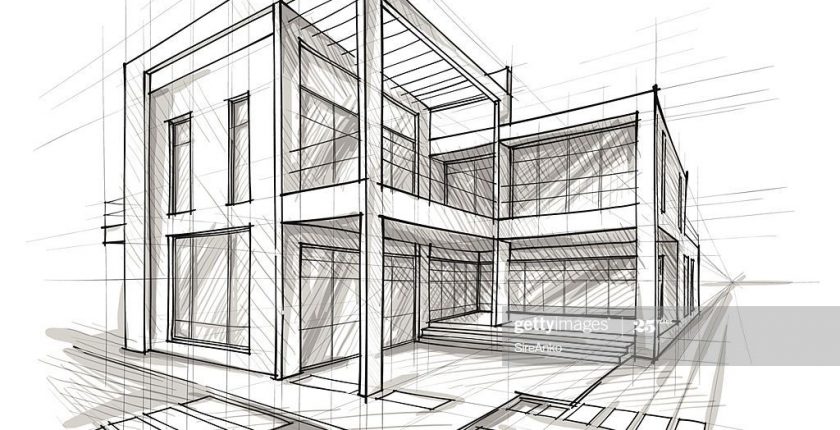A Comprehensive Summary of Building Designs and Their Influence on Modern City Planning and Development
Building styles have actually long worked as a mirror to the social values and technological advancements of their time, playing a vital role fit modern city planning and advancement. From the splendour of Neoclassicism to the practical method of Brutalism, each design has actually presented one-of-a-kind concepts that affect urban appearances and capability. As contemporary challenges emerge, consisting of sustainability and neighborhood requirements, recognizing these historical frameworks becomes necessary. The resulting dialogue not just educates future design techniques but additionally elevates essential concerns about the equilibrium in between heritage and development in our progressing metropolitan landscapes.
Historic Overview of Building Designs
Throughout background, building designs have advanced in reaction to social, technological, and environmental factors. Each duration mirrors the dominating worths, beliefs, and developments of its time, resulting in a rich tapestry of layout that symbolizes human imagination and adjustment. The ancient human beings, such as the Egyptians and Greeks, established fundamental styles that stressed symmetry and percentage, offering both useful and aesthetic purposes.
As societies transitioned through the Center Ages, Gothic architecture arised, defined by its verticality and elaborate outlining, mirroring the spiritual goals of the era. The Renaissance marked a resurgence of timeless suitables, combining art and design in cutting-edge means that influenced subsequent designs throughout Europe.
The Industrial Revolution presented new products and construction techniques, prompting motions like Modernism, which challenged traditional types and welcomed simpleness and performance. The 20th century saw a diversification of styles, with Postmodernism responding versus the raw minimalism of its precursor, including historic referrals and diverse aspects.
Today, architectural styles proceed to progress, driven by globalization and sustainability concerns, reflecting a vibrant interaction between heritage and advancement. This historical introduction highlights the importance of architecture as a mirror of social evolution and as a stimulant for city development.
Secret Architectural Styles Explained
The variety of architectural designs reflects the myriad impacts that shape our developed atmosphere, each embodying unique characteristics and cultural relevances. Key architectural styles include Classical, Gothic, Baroque, Innovation, and Postmodernism, each representing one-of-a-kind historic contexts and visual viewpoints.
Timeless style, rooted in ancient Greece and Rome, highlights symmetry, percentage, and making use of columns. In contrast, Gothic style, flourishing in the center Ages, is defined by sharp arches, ribbed vaults, and flying buttresses, creating a heavenly quality in cathedrals. Baroque design, emerging in the 17th century, is marked by splendour, intricate embellishment, and a dynamic interaction of light and darkness.

Understanding these styles supplies understanding right into the social narratives and technological innovations of their corresponding ages, highlighting exactly how style offers not just as a shelter, however as a representation of social worths and ambitions.
Influence On Urban Planning
In shaping the development of cities, building styles considerably affect urban preparation choices. The option of architectural style typically dictates the aesthetics, performance, and total personality of metropolitan settings.
Additionally, architectural designs can affect zoning policies and land utilize policies. Urban coordinators have to consider the dominating architectural trends when creating areas, making certain that new growths integrate with existing frameworks. This factor to consider cultivates cohesive urban landscapes and improves area identification.
The internet implementation of specific architectural styles can likewise affect socioeconomic factors within a city. As an example, high-end modern layouts may attract affluent citizens and companies, resulting in gentrification, while more affordable housing options may Click Here focus on useful and lasting designs to accommodate diverse populaces. Ultimately, the interplay in between building designs and city preparation develops vibrant cities that show both historical context and contemporary requirements, shaping the lived experiences of their occupants.
Sustainability and Modern Style
Building designs play an essential function in resolving contemporary obstacles, especially in the world of sustainability. As urban areas broaden and ecological problems increase, modern style progressively embraces sustainable design principles that prioritize power efficiency, source conservation, and marginal ecological effect.
Contemporary building activities, such as biophilic layout and green style, advocate for frameworks that balance with their surroundings, making use of natural materials and promoting biodiversity - cda architects. These styles commonly integrate renewable resource sources, such as photovoltaic panels and wind generators, to decrease dependence on nonrenewable fuel sources and reduced carbon footprints
In addition, the assimilation of sophisticated modern technologies, such as smart building systems, boosts energy management, enhancing resource usage while ensuring occupant convenience. Ingenious water monitoring strategies, consisting of rainwater harvesting and greywater recycling, further add to lasting metropolitan settings.
Especially, sustainability prolongs past ecological issues; it encompasses social and financial dimensions as well. By promoting community wellness and advertising inclusivity, contemporary architectural designs line up with lasting development objectives. Consequently, the evolution of architectural methods continues to form durable cities that not just fulfill the demands of today yet likewise protect the future for generations to find.
Area Interaction in Layout
Community engagement in style works as a vital bridge in learn the facts here now between designers and the populaces they offer, guaranteeing that the constructed atmosphere mirrors the needs and ambitions of its users. This joint procedure welcomes neighborhood participants to contribute their insights and preferences, fostering a feeling of ownership and duty toward the spaces they populate.
Efficient neighborhood engagement employs numerous techniques, such as workshops, surveys, and public discussion forums, to gather diverse perspectives (cda architects). These methods help with a two-way dialogue, allowing engineers to recognize regional contexts while empowering citizens to articulate their issues and desires. This inclusivity not just enhances the design quality yet additionally advertises social equity by addressing the special obstacles dealt with by marginalized groups

Final Thought
Architectural designs have greatly affected modern city preparation and development, reflecting developing cultural and technological contexts. As cities proceed to grow and adapt, the ongoing dialogue between architectural heritage and modern-day design principles will continue to be essential in producing inclusive, vibrant areas that improve top quality of life and advertise social equity.